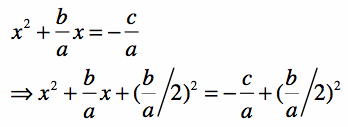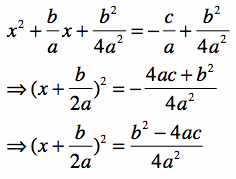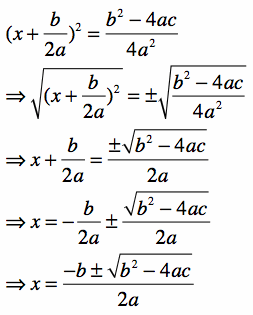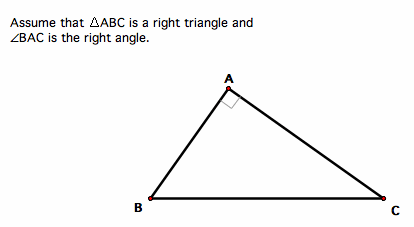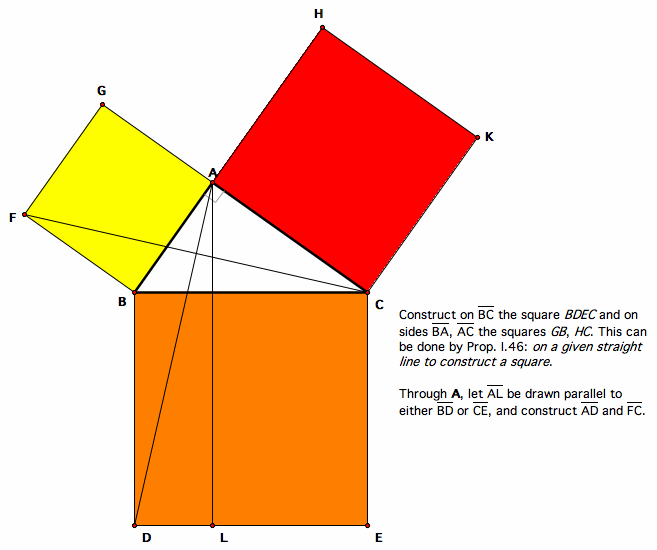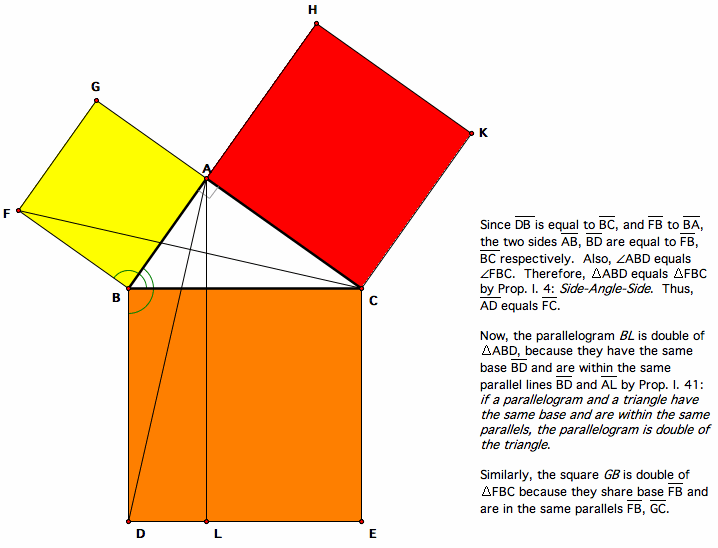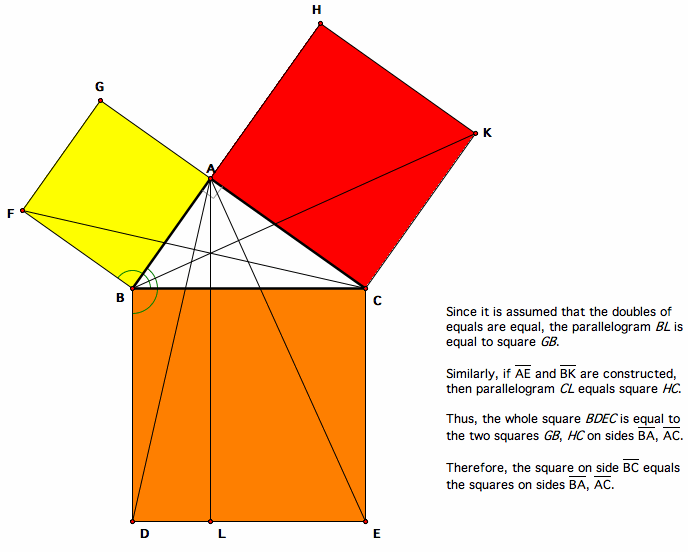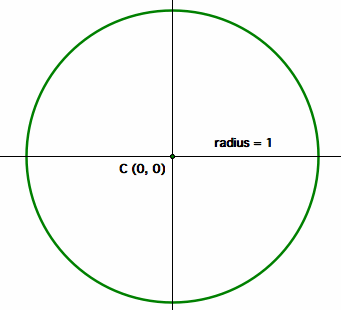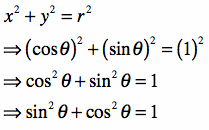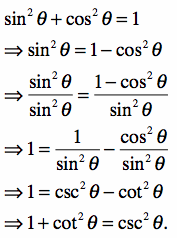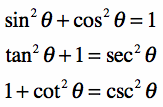
Derivations of Two High School Mathematics Formulas
by
Mike Rosonet
High school students oftentimes wonder where it is that the formulas they use in their math classes come from. "Who came up with this formula?" or "How do we know that this formula works?" -- questions like these pervade a high school mathematics classroom throughout the school year. The quadratic formula and the Pythagorean Theorem: each of these formulas are subject to such scrutiny. (For certain, there are others as every teacher can account from their own experiences.) Thus, it is necessary for high school mathematics teachers to not only know the formulas and their applications, but also the history of the formula and how to derive them from smaller chunks of mathematical knowledge, facts, and information. This will provide every student the opportunity of seeing proof as a strong mathematical argument as well as understanding the derivation of such common formulas.
The Quadratic Formula.
The discussion on quadratics begins in classifying the different types of functions. Specifically, quadratics typically appear and are worked with heavily in an Algebra II course. In this course, the standard equation of a quadratic equation will be discussed and worked with.
From this equation, the quadratic formula can be derived. However, before deriving the formula, please check this link to see what roles the variables a, b, and c play in transforming the parent graph
.
Oftentimes, given the standard equation of a quadratic function, students are asked to find the zeros of the function by solving for x. They initially learn to find zeros through factoring the quadratic equation such that, when a = 1, the product of two integers equals c and the sum of those same two integers equals b. However, there are such equations that will not factor such that there are two integer-valued zeros. With these equations, it is necessary to use the quadratic equation:
the quadratic formula
The question remains: "How do you [the teacher] know that this formulas works that way? Where did that formula come from?" Thus, it is necessary to derive the quadratic formula from the standard equation of a quadratic function by solving for x.
In order to continue solving for x, it is neccesary to complete the square.
From this previous step, it is clear to see that
. Substitute this into this last statement. Thus,
Now, take the square root of both sides and it should become clear that this is how to derive the quadratic formula from the standard equation of a quadratic function.
The Pythagorean Theorem.
A huge part of a high school geometry course is spent working with triangles, and even more specifically, right triangles. One theorem whose name most students can recall, regardless of whether or not they can remember the theorem itself, is the Pythagorean Theorem, which states that the squares of the base and height of a right triangle equals the square of the hypotenuse of the right triangle.
Although Pythagoras is credited with discovering the proof (hence, the name of the proof) in ancient Greece, history shows that other cultures also discovered the theorem apart from Pythagoras' work. These cultures include groups in ancient Egypt, India, and China. Furthermore, Euclid, who is considered to be the "Father of Geometry," presents a proof of the theorem in his most notable work Elements.
Presented here is Euclid's proof as shown in his book Elements. He constructed the theorem using his own propositions in his first book of elements. The program Geometer's Sketchpad is used here to provide illustrations of Euclid's statements.
Thus, for every right triangle, the squares of the sides a and b equal the square of the hypotenuse c. As depicted above, the Pythagorean Theorem says
Extension: The Pythagorean Identities
From Pythagora's Theorem and the unit circle, the three Pythagorean Identities used in Trigonometry courses can be derived. A unit circle is a circle whose center is located at the origin (0, 0) on the coordinate plane and whose radius is measured 1 unit.
the unit circle
Inscribe a right angle onto the unit circle such that the vertex of the right angle is located at the center of the circle. Construct a perpendicular from the point of intersection between the circle and the terminal ray of the angle to the radius of the circle, which is also the initial ray of the angle.
inscribed right triangle in the unit circle
Because the unit circle has a radius of r = 1,
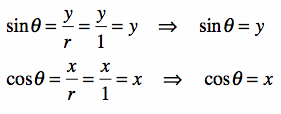
Assume that, for the above triangle, a = y, b = x, and c = r. Click here for a different derivation using the ratios given above. Since the Pythagorean theorem was proved above, it can be assumed that
By substitution,
This last statement is true by the commutative property of addition. This statement is the first of three Pythagorean Identities.
From this identity, two more can be derived by subtracting one of the trigonometric functions to the right side of the equation and then dividing both sides of the equation by the remaining trigonometric function. This is how the other two Pythagorean Identities can be derived:
Assuming that the first Pythagorean Identity is true:
The last statement is the second Pythagorean Identity. The third identity is found in a similar manner:
Thus, the three Pythagorean Identities are:
References:
Euclid. (2007). Proposition 47. In D. Densmore (Ed.) , Euclid's elements (35-36). (T. L. Heath, Trans.). Santa Fe, NM: Green Lion Press.



